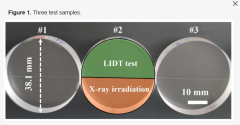China and US find out some serious truth.
That's why trump phoned China to the point of harassment level for talk to resume rare earth export from China especially the type used for military.
The significance of rare earth tech holding by China >>>>> the significance of semiconductor tech holding by US.
China holds the processing and extract technology for 99% of rare earth.
China is capable of 5nm chip production.
Yet US doesn't have any rare earth processing tech.
China willing to export restricted amount for civilian use such as for auto industry.
But nothing for military.
In short, China's holding of rare earth processing tech >>> the leverage US has on semiconductor such as NVidia and TSMC.
That's why trump phoned China to the point of harassment level for talk to resume rare earth export from China especially the type used for military.
The significance of rare earth tech holding by China >>>>> the significance of semiconductor tech holding by US.
China holds the processing and extract technology for 99% of rare earth.
China is capable of 5nm chip production.
Yet US doesn't have any rare earth processing tech.
China willing to export restricted amount for civilian use such as for auto industry.
But nothing for military.
In short, China's holding of rare earth processing tech >>> the leverage US has on semiconductor such as NVidia and TSMC.

